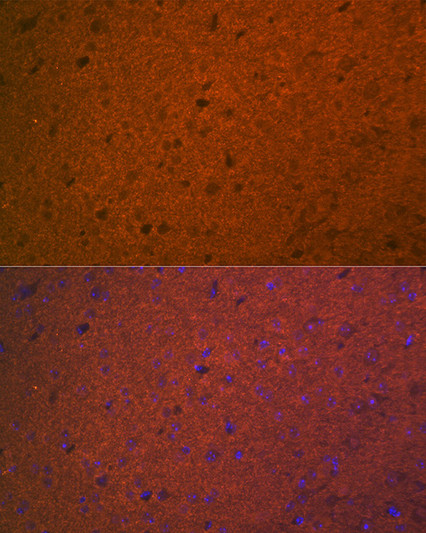| Host: | Rabbit |
| Applications: | WB/IF/ICC/IP/ELISA |
| Reactivity: | Human/Mouse/Rat |
| Note: | STRICTLY FOR FURTHER SCIENTIFIC RESEARCH USE ONLY (RUO). MUST NOT TO BE USED IN DIAGNOSTIC OR THERAPEUTIC APPLICATIONS. |
| Clonality : | Monoclonal |
| Clone ID : | S5MR |
| Conjugation: | Unconjugated |
| Isotype: | IgG |
| Formulation: | PBS with 0.02% Sodium Azide, 0.05% BSA, 50% Glycerol, pH 7.3. |
| Purification: | Affinity purification |
| Concentration: | Lot specific |
| Dilution Range: | WB:1:500-1:1000IF/ICC:1:50-1:200IP:0.5 Mu g-4 Mu g antibody for 200 Mu g-400 Mu g extracts of whole cellsELISA:Recommended starting concentration is 1 Mu g/mL. Please optimize the concentration based on your specific assay requirements |
| Storage Instruction: | Store at-20°C for up to 1 year from the date of receipt, and avoid repeat freeze-thaw cycles. |
| Gene Symbol: | SNRPA |
| Gene ID: | 6626 |
| Uniprot ID: | SNRPA_HUMAN |
| Immunogen Region: | 1-100 |
| Specificity: | A synthetic peptide corresponding to a sequence within amino acids 1-100 of human U1A/SNRPA (P09012). |
| Immunogen Sequence: | MAVPETRPNHTIYINNLNEK IKKDELKKSLYAIFSQFGQI LDILVSRSLKMRGQAFVIFK EVSSATNALRSMQGFPFYDK PMRIQYAKTDSDIIAKMKGT |
| Function | Component of the spliceosomal U1 snRNP, which is essential for recognition of the pre-mRNA 5' splice-site and the subsequent assembly of the spliceosome. U1 snRNP is the first snRNP to interact with pre-mRNA. This interaction is required for the subsequent binding of U2 snRNP and the U4/U6/U5 tri-snRNP. SNRPA binds stem loop II of U1 snRNA. In a snRNP-free form (SF-A) may be involved in coupled pre-mRNA splicing and polyadenylation process. May bind preferentially to the 5'-UGCAC-3' motif on RNAs. |
| Protein Name | U1 Small Nuclear Ribonucleoprotein AU1 Snrnp AU1-AU1a |
| Database Links | Reactome: R-HSA-72163 |
| Cellular Localisation | Nucleus |
| Alternative Antibody Names | Anti-U1 Small Nuclear Ribonucleoprotein A antibodyAnti-U1 Snrnp A antibodyAnti-U1-A antibodyAnti-U1a antibodyAnti-SNRPA antibody |
Information sourced from Uniprot.org











